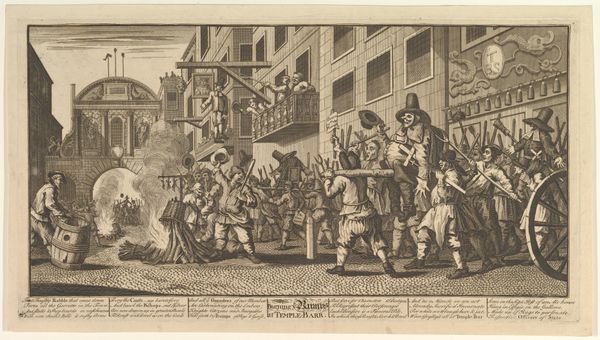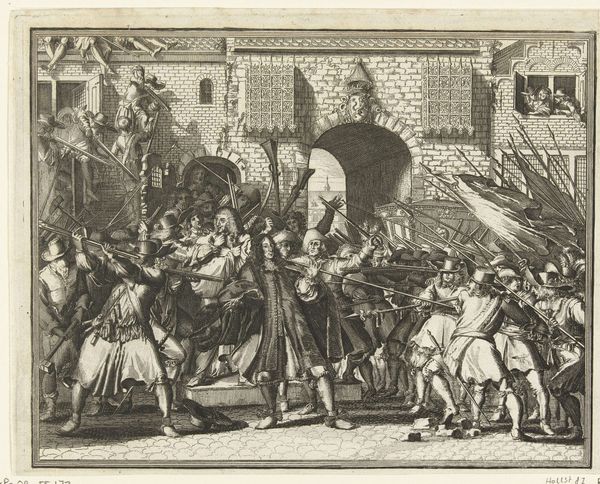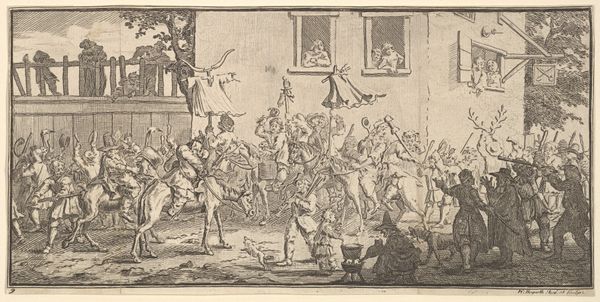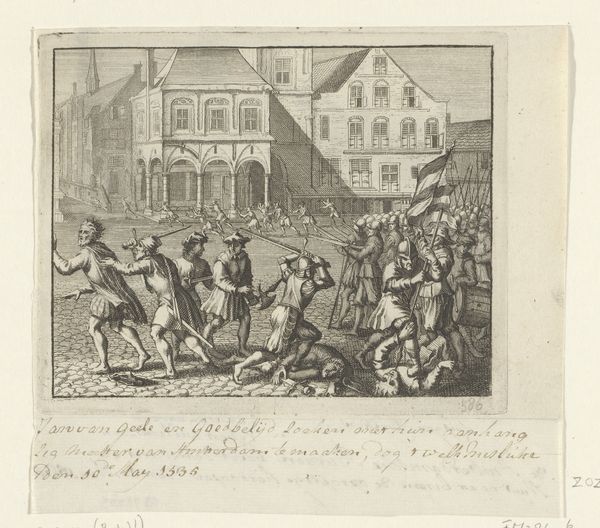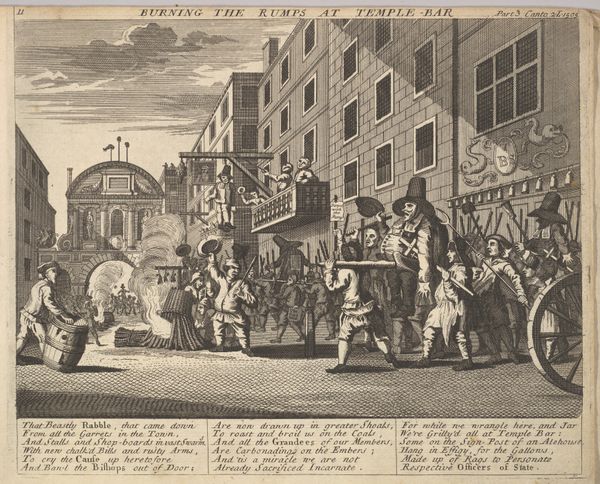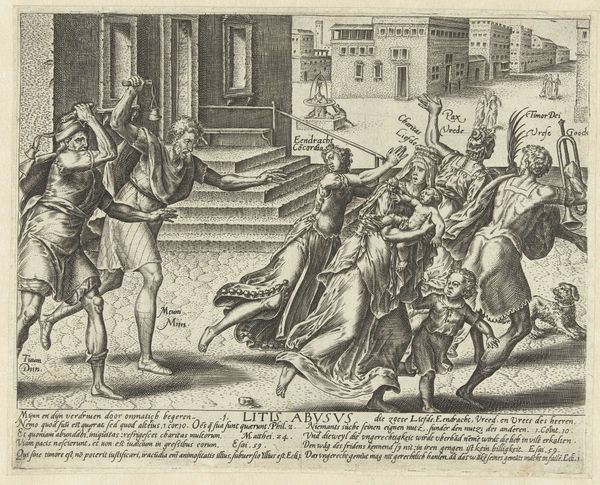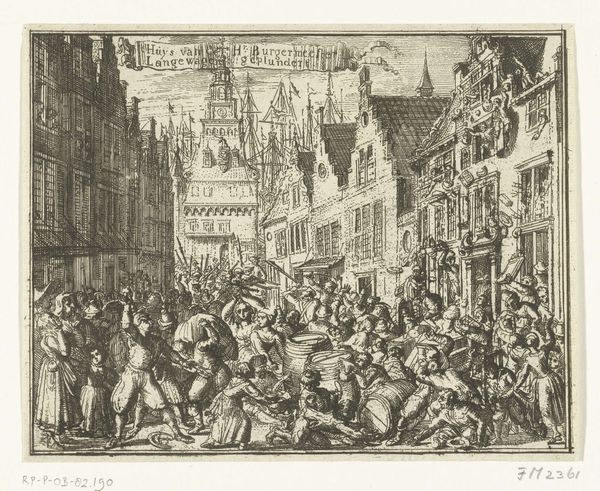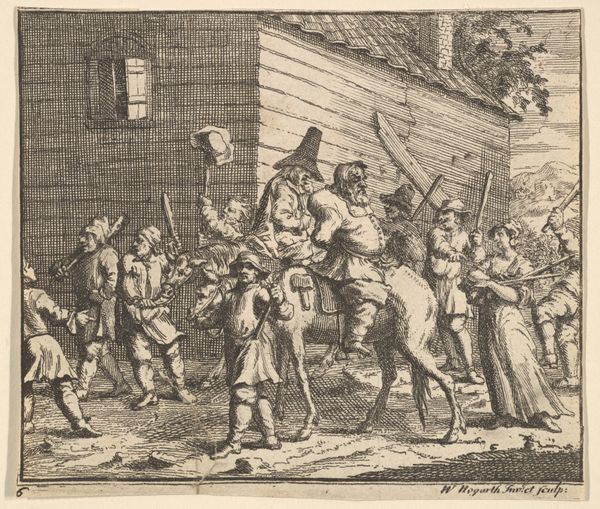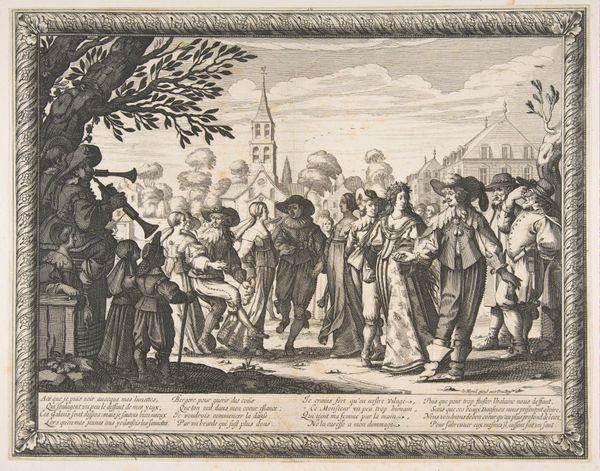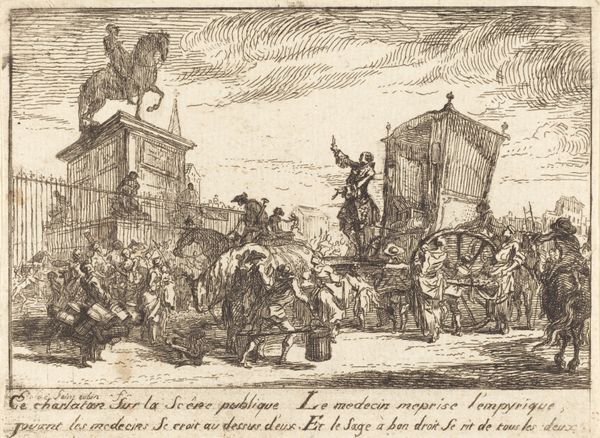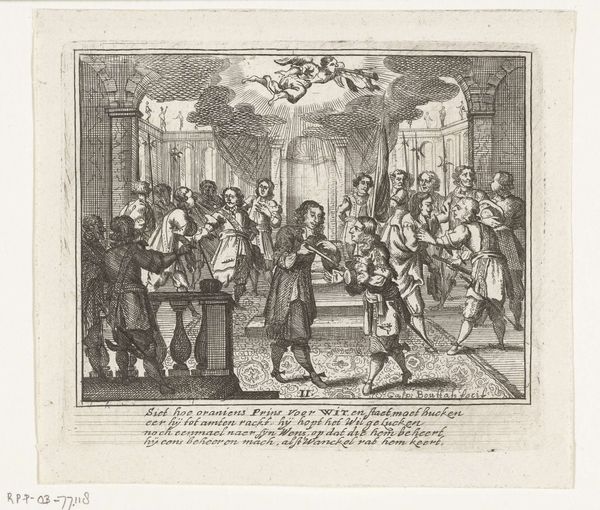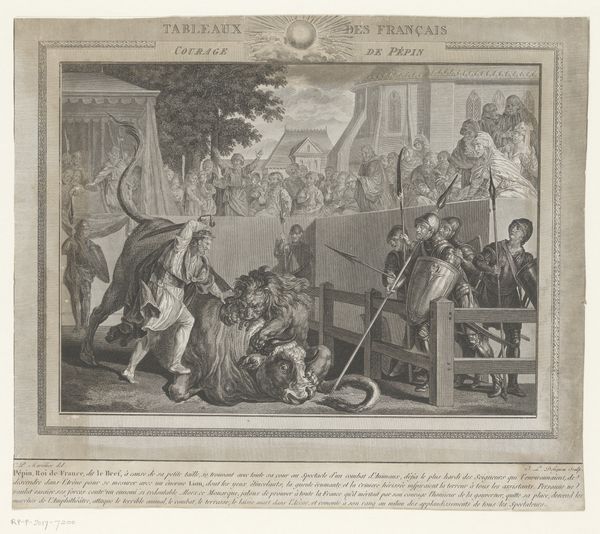
Moordaanslag op Stanislaus II Augustus Poniatovski, koning van Polen 1771 - 1804
0:00
0:00
Dimensions: height 190 mm, width 228 mm
Copyright: Rijks Museum: Open Domain
Curator: This print, “Moordaanslag op Stanislaus II Augustus Poniatovski, koning van Polen” by Johann Andreas Benjamin Nothnagel, created between 1771 and 1804, plunges us into a violent moment in Polish history. Editor: It definitely has a very chaotic and disturbing feel to it. All the figures are fighting, and you can tell that the intention of some is evil, although it is also quite an elaborate street scene. What symbols jump out at you in this work? Curator: Note the torchbearer, high above the fray, a symbol often of enlightenment or truth, but here, distorted and menacing. It illuminates the violence, but doesn't clarify the moral landscape. Is it shining a light on truth, or blinding those who seek it? And what do we make of the figures clinging to the carriage? Editor: Are you suggesting that the torch is meant to make a moral statement? The individuals clinging to the carriage appear to represent the power struggle. Curator: Precisely! Power is visually contested. The figures pulling Stanislaus, and those attacking. This dynamic signifies competing influences and perhaps even foreshadows Poland's partitioning. The figures locked in the power struggles often appear animalistic or demonic and use daggers. What psychological effects would that visual tactic elicit? Editor: I guess by associating the aggressors with animals or demons, it is meant to dehumanize them in the eyes of the viewer, as if they are pure evil or just acting instinctually? Curator: Precisely. So, what does the entire image then evoke, now that you know that? Editor: That the conflict in Poland at that time was perhaps both highly contested politically, and with a clear “good” and “bad” side in the conflict from the artist’s point of view. Curator: Absolutely, and we see those kinds of cultural perspectives visualized in so many other contexts too, making it a poignant representation of both the particular and the universal aspects of conflict.
Comments
No comments
Be the first to comment and join the conversation on the ultimate creative platform.

